Brant: The Duel of Turnus and Aeneas
Annotations
In the center of the image, Aeneas and Turnus face off in their duel. In the upper right corner, Jupiter's hand holds a set of scales in which he weighs the destinies of the two men (725-7). In the fighting ring, Turnus's sword has snapped (728-41) and he turns away, looking to flee, but the spectators block his escape. He appears to be asking the closest spectator for a sword (758-9), as Aeneas stands ready to attack both Turnus and the spectator (760-5).
Woodcut illustration from the “Strasbourg Vergil,” edited by Sebastian Brant: Publii Virgilii Maronis Opera cum quinque vulgatis commentariis expolitissimisque figuris atque imaginibus nuper per Sebastianum Brant superadditis (Strasbourg: Johannis Grieninger, 1502), fol. 406v, executed by an anonymous engraver under the direction of Brant.

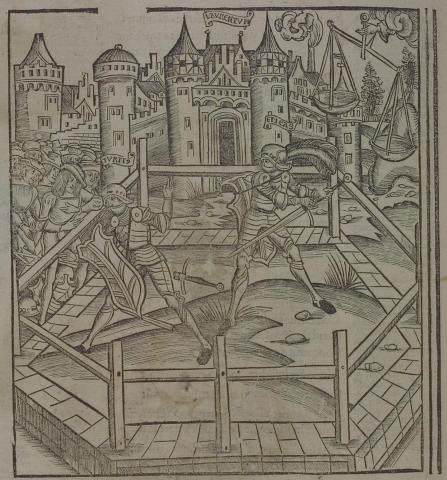
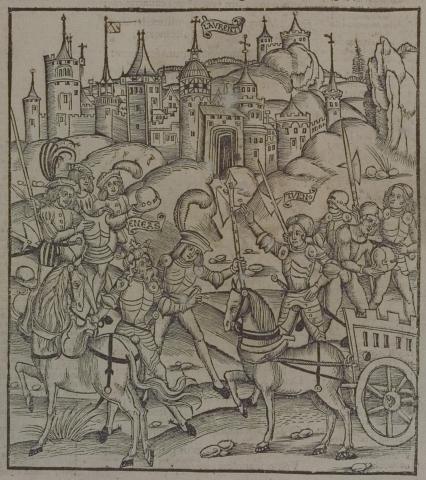
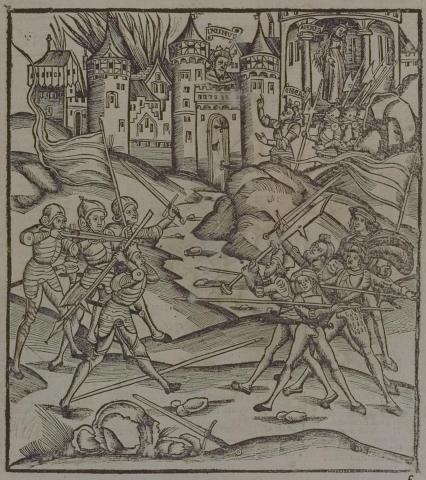

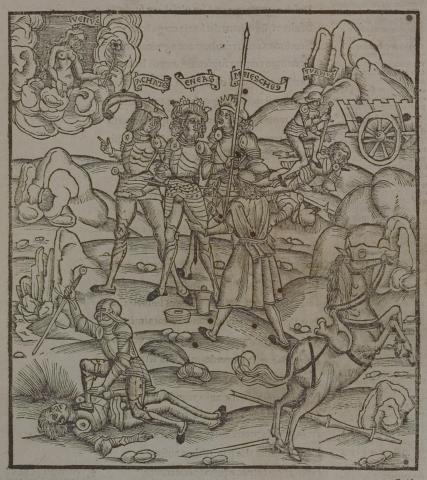

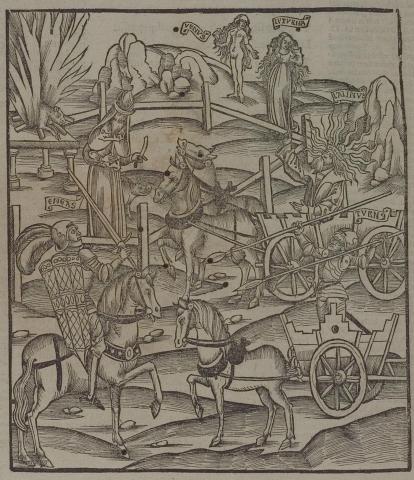
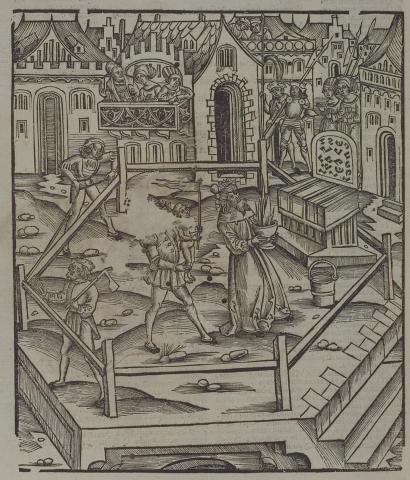
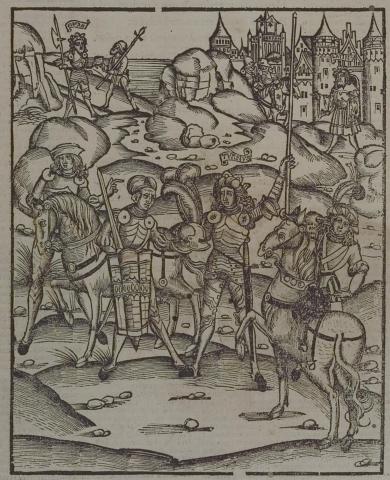

Sebastian Brant (1458-1521) was a humanist scholar of many competencies. Trained in classics and law at the University of Basel, Brant later lectured in jurisprudence there and practiced law in his native city of Strasbourg. While his satirical poem Das Narrenschiff won him considerable standing as a writer, his role in the transmission of Virgil to the Renaissance was at least as important. In 1502 he and Strasbourg printer Johannes Grüninger produced a major edition of Virgil’s works, along with Donatus’ Life and the commentaries of Servius, Landino, and Calderini, with more than two hundred woodcut illustrations. (Annabel Patterson)